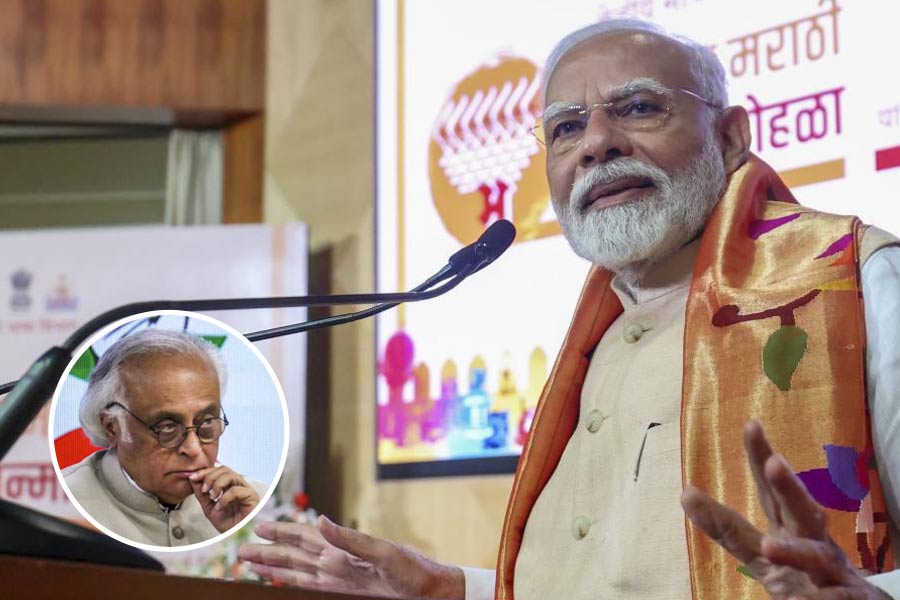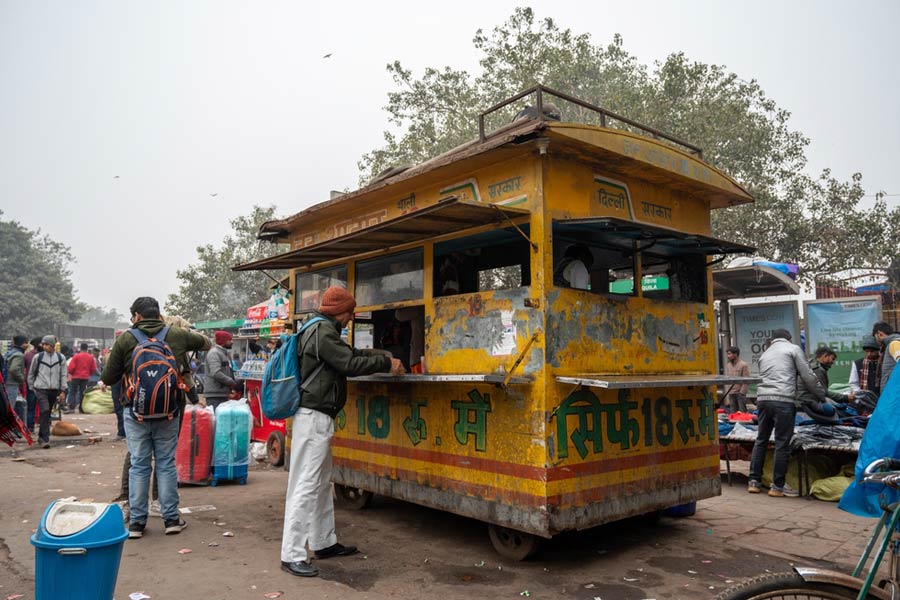 |
| Nitish Kumar meets JD(U) workers at Patna airport before leaving for Rohtas on Wednesday. Telegraph picture |
Patna, Dec. 21: Chief minister Nitish Kumar today landed in Rohtas, the sole region in central Bihar that has consistently defied his sway over the rest of the state.
Rohtas, the home to first generation Dalit leader Jag-jivan Ram and Lok Sabha Speaker Meira Kumar, is a land of paradoxes. The Kaimur range of deep forests and intricate hills, which are linked to the Vindhya and Chambal ranges in Uttar Pradesh and Madhya Pradesh respectively, are known in the lexicon of security agencies as the “Red Corridor” because of the Maoists’ presence. On the other hand, the planes of Rohtas are referred to as the state’s “rice bowl” because of the enormous yield of paddy in its farms.
Nitish’s juggernaut, which has been on the roll without much of a hindrance in other parts of the state, was grounded in Rohtas during the 2009 Lok Sabha and the 2010 Assembly elections. While Congress’s Meira Kumar won the Sasaram constituency, RJD stalwart Jagdanand Singh bagged the Buxar Lok Sabha seat.
Jagdanand, popularly referred to as “Jagda Bhai” in Bihar’s political circles, stood firmly by RJD chief Lalu Prasad and ensured that the former’s son, Sudhakar Singh, who contested the Ramgarh Assembly polls on a BJP ticket, lost to (RJD’s) Ambika Yadav. Jagdanand belongs to Ramgarh, which he represented six times in the Assembly be-fore shifting to the Lok Sabha.
Nitish, who reached Rohtas as part of his latest round of Seva Yatra, is faced with troubles from within the region as well. Though he has successfully roped in cadres of the RJD and the beleaguered LJP, he has his relatively powerful Dalit MLA from Mohania, Chhedi Paswan, raising a banner of revolt against him.
Chhedi, who had represented the Sasaram Lok Sabha seat twice by defeating a leader of Meira Kumar’s stature, wrote a letter to Nitish, criticising the chief minister “for promoting” rich contractors and builders at the cost of poor labourers. He also accused Nitish of creating a divide among the Dalit cadres for his political gains ahead of the Seva Yatra. Apart from Nitish’s political foes in Rohtas, the region’s affluence in agriculture, perhaps, has posed troubles to the chief minister. Inputs from the grassroots level suggest that the people in Rohtas, now divided into Rohtas and Kaimur districts, are up in arms against the government’s “failure” to set up paddy procurement centres despite fixing the support price at Rs 1,080 per quintal.
“We are forced to sell our paddy at Rs 700 per quintal because no procurement centre is coming up despite repeated announcements by the government,” said a farmer from Rohtas. Rich in the yield of paddy, Rohtas and Kaimur have hundreds of rice mills, supplying rice to several parts of the country. The farmers are unhappy with the government for not paying much attention to the Sone canal system built during the British days. The canal system had helped the region earn the “rice bowl” sobriquet.
Unlike flood-hit Mithila and Kosi regions, where it was relatively easy to please the residents by giving them flood relief and foodgrain at cheap rates and houses under the Indira Awas Yojna, it is difficult to please the residents of Rohtas.
Against a large section of impoverished people migrating to other states in search of employment and livelihood, Rohtas gets labourers from Jharkhand and Odisha to work on paddy fields.
“Our people do not beg the government to include them in the below poverty line list or build houses for them. They want water in the farms and paddy procurement centres,” said Jagdanand, a farmer himself.










